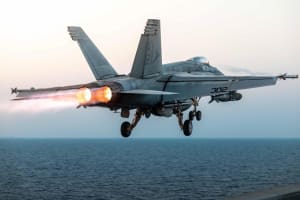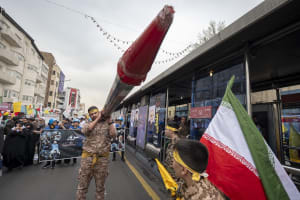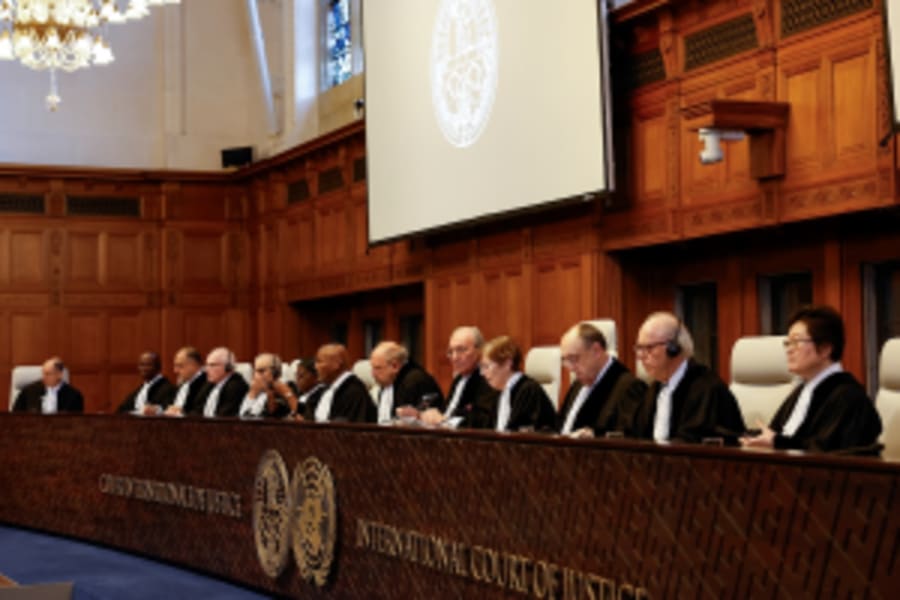The great migration: Israel is an annual crossroads for 500 million birds
Birds are mentioned more than any other animal in Creation

In the first chapter of Bereshit (Genesis), between verses 20-30, "birds" (עוף) are mentioned no less than six times, more than any other animal species in the six days of Creation.
A few numbers: In 2021, there were 11,162 recorded bird species globally, totaling an estimated 50 billion birds. One percent of these birds (500 million) and some 550 species (5% of the world's species) converge annually over Israel's skies, twice a year, in the spring and autumn. A few of the species stop for a while in the Hula Reserve in Northern Israel, and in the Birdwatching Park in Eilat to rest their tired wings and enjoy some local refreshments.
Israel is well known as the Bird Migration Capital of the world. The country lies at a bottleneck along one of the world's most important migration flyways. The vast majority of the 500 million are on their way from their nesting grounds in Europe and Asia, to their wintering grounds in Africa, then back again to their nesting grounds.
Their trajectory takes them over Israel in each direction. Almost the entire global population of a few species moves through our country. One example are the white storks: half a million stop in Israel for food and rest, nearly all the ones from Europe and Asia.
Out of a world population of some 250,000-300,000 pelicans, about 40,000 fly over Israel in both directions. (I took these photos of a flock of some 2,000 pelicans as they flew from the Hula Reserve over Kibbutz Kfar Giladi, in April 2010. I had called the reserve and was informed of the number of pelicans that visited the reserve that morning).
Thousands of bird-watching tourists come to Israel every year during the two migration periods, including many photojournalists from around the world. Thomas Krumenaker, a German journalist and photographer, came 11 years ago to see the Israeli migratory phenomenon he had both read and heard about, and it changed his life. His visit here, the first of many, led to his book "Birds in the Holy Land," published in German and English. He follows the birds' flights from Mount Hermon to Eilat on each of his visits.
Migrating birds can travel as far as 16,000 miles (25,000 kilometers). Some travel even greater distances! They use the stars, sun and the earth's magnetism to guide them in either direction. They almost always return home to where they were born. Truly, the phenomenon of migrating birds, along with other migrating animal species, are among the many wonders of Creation!
The Society for the Protection of Nature in Israel – SPNI – is developing a network of 14 birdwatching stations across the country for tourists and researchers. The goal is to cater to 1.5 million domestic and foreign birding tourists annually. These stations will provide additional opportunities for migratory birds to rest and feed themselves.
We don't know why God chose Israel as the home of the Jewish people. But the fact of Israel's geographic centrality between Europe, Asia and Africa, has much to do, not only with the country's attraction to 500 million birds annually, but also with Israel's increasing global influence in an ever-growing number of fields of endeavor, for the benefit of a rapidly growing population.
The verse in Isaiah 2:3 – כי מציון תצא תורה ודבר ה' מירושלים ("from Zion shall the Torah go forth and the word of G-d from Jerusalem") – teaches us the spiritual centrality of Israel – Zion – among the nations. Israel is like the keystone, the central stone in ancient building arches.
The arch cannot stand without the keystone, and the world would not exist without Israel.

Menachem Bar-Shalom, was born in Israel, raised in the U.S. and then made aliyah alone from Los Angeles in 1971. A retired fundraiser for various Jewish organizations, Menachem is currently involved in Jewish-Christian relations with two projects: raising funds from Christians to support security needs of Jewish settlements in the Binyamin region; raising funds to support Holocaust survivors in Maale Adumim. He is also an avid nature photographer.














